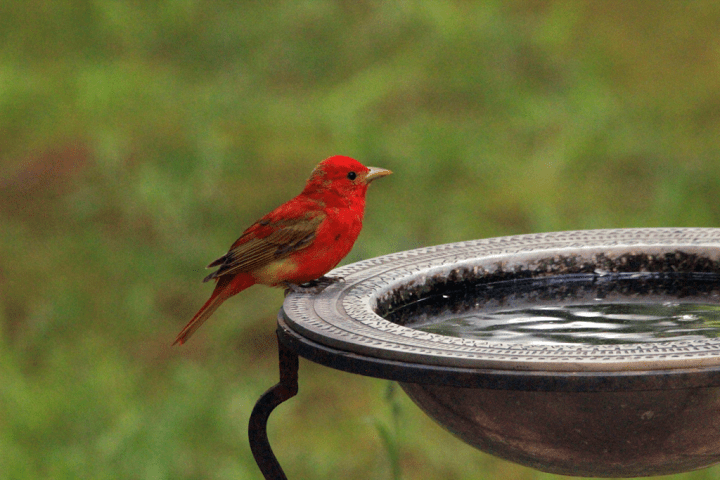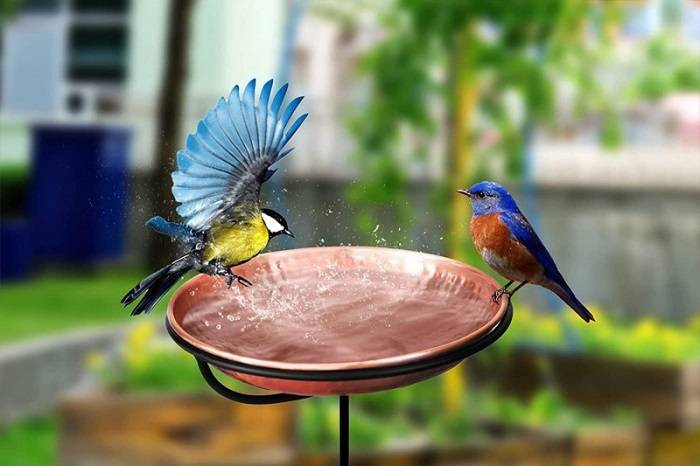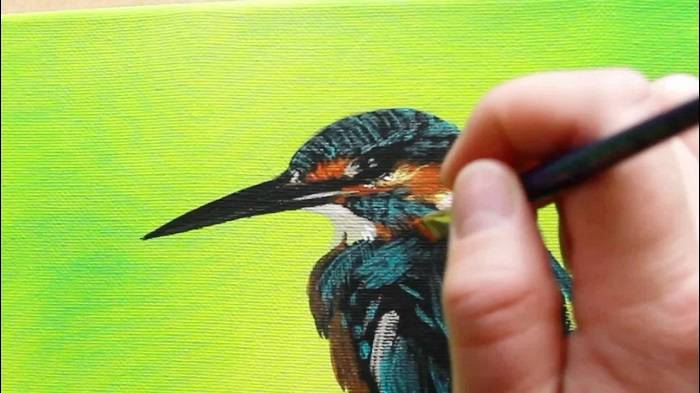Bird baths are not only functional additions to your garden but also aesthetic ones, attracting avian visitors and adding a touch of tranquility to your outdoor space. While the material and design of your bird bath are essential considerations, choosing the right paint can also enhance its durability and visual appeal. In this comprehensive guide, we’ll explore everything you need to know about selecting the perfect paint for your bird bath, ensuring it remains both beautiful and bird-friendly.
Understanding the Importance of Bird-Safe Paint
Safety for Avian Visitors:
- Birds are sensitive creatures, and the materials used in their environment can significantly impact their health and well-being. Choosing bird-safe paint for your bird bath is crucial to ensure that visiting birds are not exposed to harmful chemicals or toxins that could endanger their health.
Durability and Longevity:
- In addition to safety considerations, selecting high-quality paint for your bird bath will help protect it from the elements and extend its lifespan. Properly applied paint can enhance the durability of the bird bath, preventing it from deteriorating due to exposure to sunlight, rain, and temperature fluctuations.
Types of Paints for Bird Baths
Water-Based Acrylic Paint:
- Water-based acrylic paints are a popular choice for bird baths due to their durability, versatility, and ease of use. These paints are non-toxic when dry, making them safe for birds and other wildlife. Additionally, water-based acrylics adhere well to a variety of surfaces, including concrete, ceramic, and plastic, providing long-lasting color and protection.
Non-Toxic Spray Paint:
- Non-toxic spray paints specifically formulated for outdoor use are another option for painting bird baths. These paints often contain low levels of volatile organic compounds (VOCs) and are designed to resist fading, chipping, and peeling. However, it’s essential to ensure that the spray paint is labeled as non-toxic and suitable for use around birds.
Milk Paint:
- Milk paint is an environmentally friendly option made from natural ingredients such as milk protein (casein), lime, and earth pigments. This eco-friendly paint is non-toxic, biodegradable, and safe for use on bird baths. While milk paint may not offer the same level of durability as acrylics or spray paints, it provides a rustic, matte finish that complements natural surroundings.
Factors to Consider When Choosing Paint
Safety Certification:
- When selecting paint for your bird bath, look for products that have been certified as non-toxic and safe for use around birds. Look for certifications such as ASTM D4236 or AP (Approved Product) Seal from the Art & Creative Materials Institute (ACMI) to ensure that the paint meets safety standards.
Colorfastness and UV Resistance:
- Choose paint that is colorfast and UV-resistant to prevent fading and discoloration over time. This will help maintain the vibrancy of your bird bath’s color and ensure it remains visually appealing for years to come, even when exposed to sunlight.
Adhesion and Coverage:
- Consider the surface of your bird bath and choose paint that offers excellent adhesion and coverage. Some paints are specifically formulated for use on porous surfaces like concrete or stone, while others may be better suited for smooth surfaces like ceramic or metal.
Tips for Painting Your Bird Bath
Preparation:
- Before painting your bird bath, thoroughly clean the surface to remove dirt, debris, and any existing paint or coatings. Use a mild detergent and water solution, scrubbing gently with a brush or sponge. Rinse the bird bath thoroughly and allow it to dry completely before painting.
Priming:
- If your bird bath is made of a porous material such as concrete or stone, consider applying a primer before painting to improve adhesion and coverage. Choose a primer that is compatible with both the surface material and the type of paint you plan to use.
Application:
- Apply the paint to your bird bath using a brush, roller, or sprayer, following the manufacturer’s instructions for best results. Take care to apply thin, even coats, allowing each layer to dry completely before applying the next. Avoid painting the interior of the bird bath to prevent contamination of the water.
Curing:
- Allow the paint to cure fully according to the manufacturer’s recommendations before filling the bird bath with water or allowing birds to use it. This will ensure that the paint has hardened and cured properly, reducing the risk of peeling, chipping, or leaching of chemicals into the water.
Perfect Paint for Your Bird Bath
Regular Cleaning:
- To keep your painted bird bath looking its best, clean it regularly with mild soap and water. Avoid using harsh chemicals or abrasive cleaners, as these can damage the paint and harm visiting birds.
Touch-Up:
- Periodically inspect your bird bath for signs of wear or damage, such as chipping or fading. Touch up any areas as needed with matching paint to maintain the integrity and appearance of the bird bath.
Related Post:
Cracking the Mystery: How Long Does It Take for Duck Eggs to Hatch?
Unlocking the Egg-Laying Mystery: When Do Ducks Start Laying Eggs?
Choosing the Perfect Pet Duck: A Comprehensive Guide
Selecting the perfect paint for your bird bath is essential for ensuring both its aesthetic appeal and the safety of visiting birds. By choosing bird-safe, durable paints and following proper application techniques, you can enhance the beauty and longevity of your bird bath while providing a safe and inviting oasis for avian visitors. So, whether you opt for water-based acrylics, non-toxic spray paints, or eco-friendly milk paint, take the time to choose the right paint for your bird bath and enjoy the sight of colorful feathered visitors for years to come.




